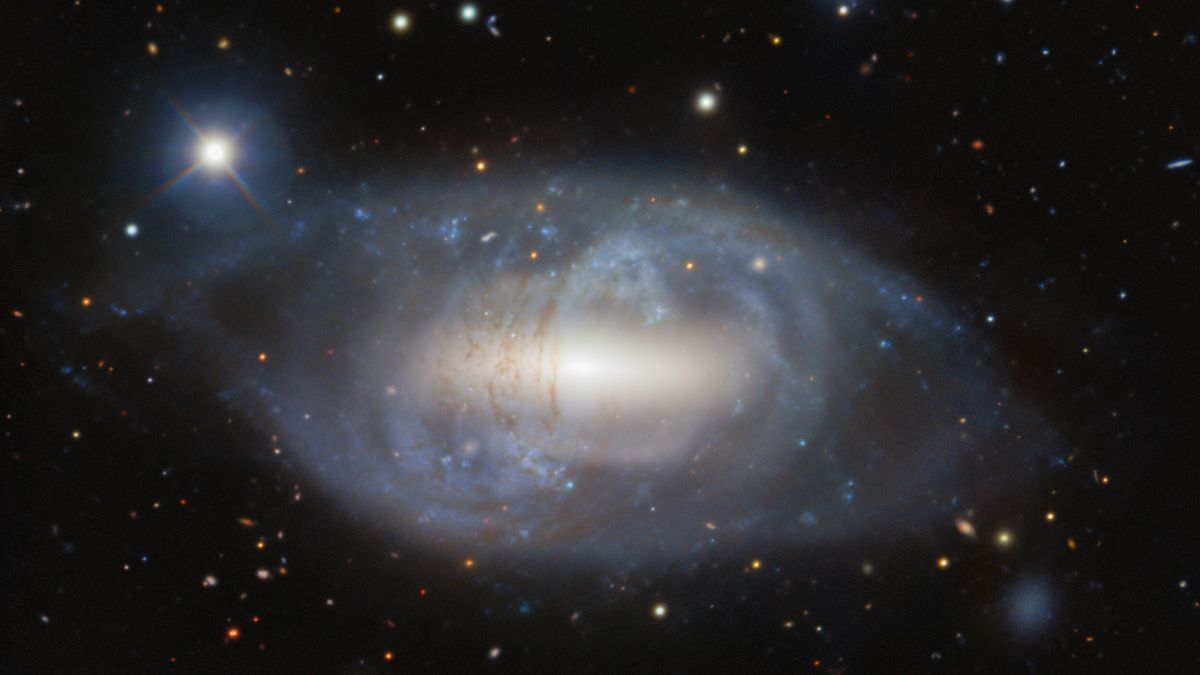What it is: NGC 2685, a lenticular and “polar ring” galaxy
Where it is: 40 million light-years away, in the constellation Ursa Major
When it was shared: April 10, 2024
Why it’s so special: This is a new image of NGC 2685, also known as the “Helix Galaxy” or the “Pancake Galaxy.” It’s one of the most unusual galaxies in the universe.
Galaxies are the neighborhoods of the visible universe. Home to gas, dust and all stars and planets, they’re held together by gravity and come in a few specific types. The most common are elliptical galaxies, which look circular and usually contain older stars, according to NASA. Then there are spiral galaxies like our Milky Way, where stars exist in arms that give a pinwheel-like look.
But NGC 2685 doesn’t fit any of those types. It’s classified as a lenticular galaxy because it has a central bulge but no spiral arms. As this image from the Gemini North telescope in Hawaii shows, it also has rings of gas, dust and stars orbiting in loops that are perpendicular to the flat plane of the galaxy. It’s this peculiar characteristic that gives it the added description of a “polar ring” galaxy. The new image is an update to one taken in 1998 from Kitt Peak National Observatory in Arizona.
Related: ‘Mind-blowing’ James Webb telescope images reveal 19 spiral galaxies in the greatest detail ever seen
Lenticular galaxies are thought to be old spiral galaxies whose arms have faded, according to NASA, though the unique structure of NGC 2685 could be the result of two or more galaxies crashing into each other and merging over millions of years. According to NOIRLab, current research suggests that NGC 2685’s present structure came to be when it captured material from another galaxy, which was strung out into an encircling ring.
NGC 2685 can be found close to the Big Dipper, a prominent group of stars within the constellation Ursa Major.

Dr. Thomas Hughes is a UK-based scientist and science communicator who makes complex topics accessible to readers. His articles explore breakthroughs in various scientific disciplines, from space exploration to cutting-edge research.








